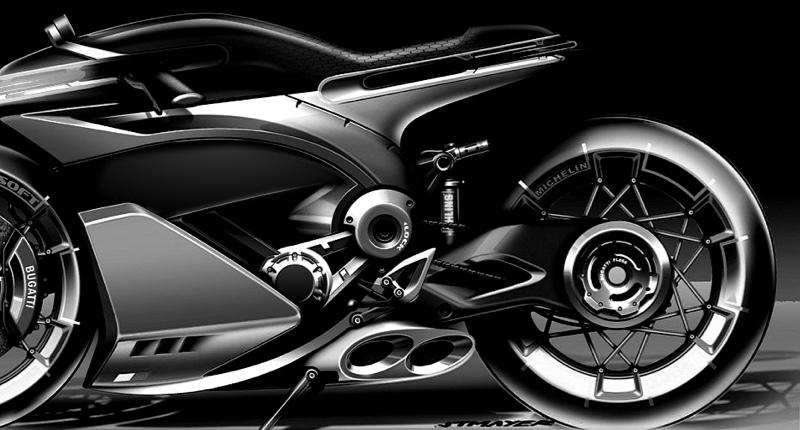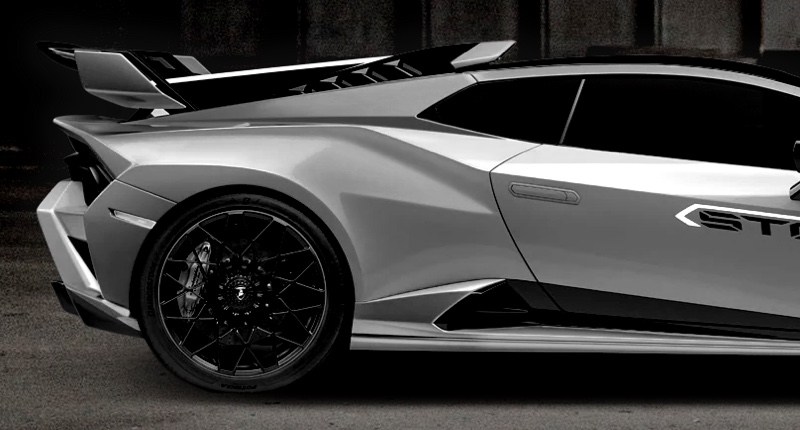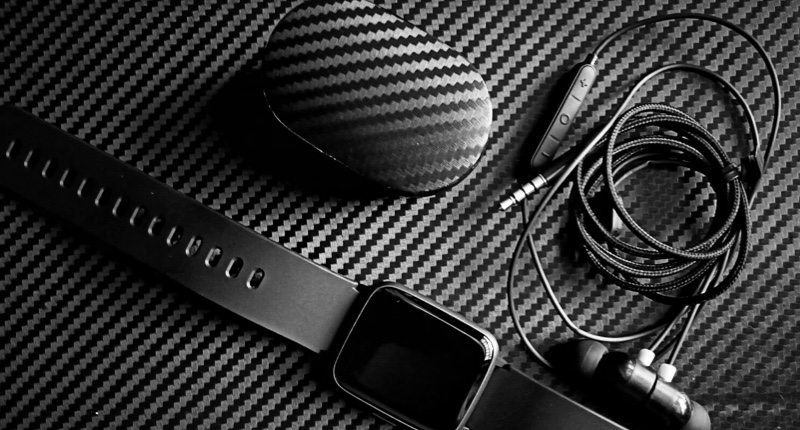Dry vs Wet Carbon for Motorcycles: Pros and Cons
- Dry vs Wet Carbon for Motorcycles: Pros and Cons
- What does dry carbon vs wet carbon mean?
- How dry carbon is made and why it matters for motorcycle parts
- How wet carbon (wet layup) is made and where it excels
- Side-by-side performance comparison: dry carbon vs wet carbon for motorcycle applications
- Manufacturing considerations: quality control, tooling and scalability ( keywords: custom carbon fiber motorcycle parts)
- Cost breakdown and pricing expectations (: buy carbon fiber parts)
- Aesthetics, finishing and customer perception (keyword: dry carbon vs wet carbon)
- Durability, impact resistance and repairability
- Which should you choose: racing, street, or custom builds?
- Hybrid approaches and modern techniques
- Supreem Carbon: our capabilities and why we recommend tailored solutions
- Why choose Supreem Carbon for dry carbon vs wet carbon motorcycle parts?
- Core products and competitive strengths (commercial keywords: carbon fiber motorcycle parts, carbon fiber automobile parts, customized carbon fiber parts)
- Practical buying and specification checklist (for customers planning to buy carbon fiber parts)
- Questions to ask your supplier (: buy carbon fiber parts)
- Specification tips
- Conclusion: balancing performance, aesthetics and budget in dry carbon vs wet carbon decisions
- FAQ — Dry carbon vs wet carbon (common questions riders and builders ask)
- Q: Is dry carbon always stronger than wet carbon?
- Q: Can I repair dry carbon parts the same way as wet carbon parts?
- Q: Why do dry carbon parts cost more?
- Q: For a street bike with occasional track days, which should I pick?
- Q: How do I verify the quality of the carbon part I receive?
- Contact Supreem Carbon / View our products
- Sources and further reading
Dry vs Wet Carbon for Motorcycles: Pros and Cons
What does dry carbon vs wet carbon mean?
The phrase dry carbon vs wet carbon refers to two common composite manufacturing approaches used to produce carbon fiber motorcycle parts. Dry carbon typically means pre-impregnated carbon fiber (prepreg) cured under controlled conditions (often in an autoclave), where the resin content is carefully controlled before curing. Wet carbon (also called wet layup, hand layup or vacuum-bagged wet layup) refers to fabrics that are impregnated with liquid resin during the layup process and then cured using ambient, heat, or vacuum-assisted methods. For motorcycle owners and builders, the choice between dry carbon and wet carbon affects weight, stiffness, finish, cost, and durability.
How dry carbon is made and why it matters for motorcycle parts
Dry carbon parts are generally manufactured from prepreg materials—carbon fiber fabrics already coated with a carefully measured amount of thermosetting resin (epoxy). The layup occurs in clean conditions, and the part is cured under heat and pressure in an autoclave or press. This process achieves high fiber volume fraction (more fiber, less resin), consistent mechanical properties, and an ultra-smooth, high-gloss finish after post-processing. For high-performance motorcycle components—fairings, tanks, swingarms, and structural braces—these benefits translate to better stiffness-to-weight and strength-to-weight ratios, repeatable quality, and a High Quality appearance.
How wet carbon (wet layup) is made and where it excels
Wet carbon or wet layup involves placing dry carbon fiber fabric into a mold and then saturating it with a liquid resin (epoxy, polyester, or vinyl ester) using brushes, rollers, or infusion. The part may be cured at room temperature or in an oven and often uses vacuum bagging to consolidate layers. Wet layup is flexible and cost-effective for small runs, custom shapes, or large parts. While wet carbon parts can still be strong and visually appealing after clear coat, they typically contain more resin, which increases weight and can reduce fiber-dominated mechanical properties when compared to properly produced dry (prepreg) parts.
Side-by-side performance comparison: dry carbon vs wet carbon for motorcycle applications
Below is a practical comparison across common decision factors for motorcycle parts. The numbers shown (fiber volume fraction ranges, estimated cost multiplier) are industry-typical guidance and can vary by material, manufacturer, and process control.
| Characteristic | Dry Carbon (Prepreg / Autoclave) | Wet Carbon (Wet Layup / Vacuum-Bag) |
|---|---|---|
| Fiber Volume Fraction (typical) | 55%–65% | 35%–50% |
| Strength & Stiffness (per weight) | Higher (better fiber-dominated performance) | Good but lower than dry carbon for same part geometry |
| Surface Finish | Superior—smooth, consistent, high-gloss after finishing | Good to very good with skilled finishing, more handwork required |
| Weight | Lighter (lower resin content) | Heavier (more resin pockets possible) |
| Dimensional Accuracy & Repeatability | High (controlled manufacturing) | Moderate (operator dependent) |
| Cost (relative) | Higher (materials + autoclave/controlled process) | Lower (lower prep cost, simpler tooling) |
| Lead Time for Small Runs | Longer (curing schedules, tooling, autoclave availability) | Shorter (fast prototyping and small-batch flexibility) |
| Repairability | Repairable but requires expertise; matching prepreg and cure can be harder | Easier to patch in the field with wet layup techniques |
| Typical Use-Cases | Racing, high-end street parts, structural components, limited-series High Quality items | Aftermarket cosmetic parts, custom one-offs, large bodywork, budget-conscious upgrades |
Sources and industry literature support these ranges (see references at the end).
Manufacturing considerations: quality control, tooling and scalability ( keywords: custom carbon fiber motorcycle parts)
Manufacturers making custom carbon fiber motorcycle parts must weigh setup cost against production volume. Dry carbon processes demand investment in prepreg storage (freezers), autoclave or high-pressure presses, precision tooling, and trained technicians to control layup and cure cycles. Those investments pay off when producing structural or High Quality cosmetic parts where repeatability and mechanical performance matter. Wet layup requires less capital, simpler molds, and can be scaled quickly for one-off or limited-series items. Many custom shops use wet carbon for prototyping, custom bodywork, and lower-cost aftermarket items, while reserving dry prepreg for performance-critical components.
Cost breakdown and pricing expectations (: buy carbon fiber parts)
Costs depend on raw materials, labor, finishing, and economies of scale. For motorcycle parts, prepreg material is more expensive per square meter than dry fabric, and autoclave curing increases overhead. A pragmatic expectation: a High Quality dry carbon fairing or tank can cost 1.5–3x more than an equivalent wet layup item, depending on finish quality and complexity. For consumers looking to buy carbon fiber parts, that price High Quality often reflects long-term performance and superior aesthetics. For builders valuing quick turnaround or lower upfront price, wet carbon is a sensible choice.
Aesthetics, finishing and customer perception (keyword: dry carbon vs wet carbon)
Appearance is often the deciding factor for motorcycle owners. Dry carbon typically displays tighter, clearer weave definition and fewer print defects because resin content and consolidation are tightly controlled. Wet carbon can still achieve excellent visual results, but achieving a flawless glass-like finish is more labor intensive and relies on post-sanding, filling, and clear coating. For customers seeking showroom-level visuals or concours-quality displays, dry carbon usually delivers a more consistent High Quality look.
Durability, impact resistance and repairability
Dry carbon’s higher fiber content and superior consolidation often yield better stiffness and fatigue resistance for structural parts. However, brittle failure modes are possible if a structural part is subject to significant impact. Wet carbon parts, having more resin, can sometimes exhibit better local energy absorption (at the cost of added weight). Importantly, wet layup parts are typically easier to repair at modest cost—local sanding, patching and re-coating can restore serviceability. Dry carbon repairs require matching prepreg materials and replicating curing procedures or carefully engineered cold-bonding solutions, which can be more expensive.
Which should you choose: racing, street, or custom builds?
- Racing (track-focused): dry carbon is preferred for structural and aero-critical components because of its superior stiffness-to-weight and repeatability. Teams with budgets for prepreg and autoclave processing gain measurable performance advantages.
- Street (daily riding): wet carbon panels can provide an excellent balance of cost, appearance and durability. For cosmetic upgrades, wet layup often makes more sense. For critical structural parts (e.g., reinforced mounts or safety-related items), dry carbon is worth the High Quality.
- Custom builds and low-volume bespoke projects: often a hybrid approach works best—wet layup for large fairings or non-structural custom shapes, and dry carbon for structural, thin, or highly finished pieces.
Hybrid approaches and modern techniques
Many manufacturers combine methods: using prepreg for high-stress internal structures, and wet layup or infusion for larger or less critical panels to optimize cost and performance. Resin infusion processes (a variant of wet techniques) can approach the consolidation and performance of prepreg, particularly when vacuum-assisted resin transfer molding (VARTM) and controlled tooling are used. The decision ly depends on part requirements, production volume, and budget.
Supreem Carbon: our capabilities and why we recommend tailored solutions
Supreem Carbon, established in 2017, is a customized manufacturer of carbon fiber parts for automobiles and motorcycles, integrating R&D, design, production, and sales to deliver high-quality products and services. We specialize in technology research and development of carbon fiber composite products and produce related items. Our main offerings include customization and modification of carbon fiber accessories for vehicles, as well as manufacturing carbon fiber luggage and sports equipment.
Why choose Supreem Carbon for dry carbon vs wet carbon motorcycle parts?
Supreem Carbon combines technical R&D with experienced production teams to advise and deliver the right manufacturing method for each project. Our factory spans approximately 4,500 square meters and employs 45 skilled production and technical staff, achieving an annual output value of around 4 million dollars. We currently offer over 1,000 product types, including more than 500 customized carbon fiber parts. That scale allows us to produce both small bespoke runs and larger series while maintaining quality controls suited to dry carbon and wet carbon processes.
Core products and competitive strengths (commercial keywords: carbon fiber motorcycle parts, carbon fiber automobile parts, customized carbon fiber parts)
Supreem Carbon’s main product lines include carbon fiber motorcycle parts, carbon fiber automobile parts, and customized carbon fiber parts. Our strengths are:- Integrated R&D and design capability to select the suitable process (dry vs wet) for intended part function.- Skilled technicians who execute both prepreg/autoclave and wet layup/vacuum techniques.- A broad product catalog and customization options that let customers choose performance or cost-optimized solutions.- Quality control protocols that ensure consistent weave alignment, surface finish, and dimensional accuracy across production runs.
Practical buying and specification checklist (for customers planning to buy carbon fiber parts)
Questions to ask your supplier (: buy carbon fiber parts)
1) Which process will you use for my part—prepreg/autoclave or wet layup—and why? 2) What fiber types and resin systems will be used? 3) Can you provide fiber volume fraction or basic laminate schedule? 4) What tolerances, finish options, and lead times do you offer? 5) Do you offer structural testing or quality inspection reports? 6) What warranty and repair support do you provide?
Specification tips
- For structural or weight-critical parts, request prepreg/autoclave solutions and laminate data sheets.
- For cosmetic or large-area panels, accept wet layup with high-quality finishing and ask for clear-coat processes.
- If you plan to repair or modify parts later, clarify repair methods and availability of matching materials.
Conclusion: balancing performance, aesthetics and budget in dry carbon vs wet carbon decisions
Both dry carbon and wet carbon have important roles in motorcycle parts manufacturing. Dry carbon (prepreg/autoclave) is the go-to when maximum performance, repeatability, and High Quality finish are required. Wet carbon (wet layup, vacuum-assisted or infusion methods) is an excellent, cost-efficient option for cosmetic upgrades, large parts, and rapid prototyping. For many projects, a hybrid approach delivers the best value. Work with a supplier who understands both methods and can recommend the optimal process for each part based on function, budget, and desired finish.
FAQ — Dry carbon vs wet carbon (common questions riders and builders ask)
Q: Is dry carbon always stronger than wet carbon?
A: Not always in every scenario, but generally dry carbon parts with controlled prepreg and autoclave cure produce higher fiber volume fraction and better fiber-dominated mechanical properties (strength and stiffness per weight) than typical wet layup parts.
Q: Can I repair dry carbon parts the same way as wet carbon parts?
A: Dry carbon repairs can be done, but they require expertise to match materials and cure conditions. Wet layup repairs are often easier and more accessible for small shops and field repairs.
Q: Why do dry carbon parts cost more?
A: Higher material costs (prepreg fabrics), controlled storage and handling, autoclave or press curing, and more stringent quality control all increase production costs and result in higher prices for finished parts.
Q: For a street bike with occasional track days, which should I pick?
A: For most street bikes, wet carbon offers an excellent balance of aesthetics, cost and durability for non-structural parts. For specific structural upgrades or weight-critical components used on track days, consider dry carbon.
Q: How do I verify the quality of the carbon part I receive?
A: Request photos of the layup and tooling, ask for laminate schedules, inquire about fiber orientation and resin types, and, for critical parts, request inspection data or certification from the manufacturer.
Contact Supreem Carbon / View our products
If you're evaluating dry carbon vs wet carbon for your motorcycle project and want expert guidance or a quote, contact Supreem Carbon. We provide both customized carbon fiber motorcycle parts and production-volume solutions. Visit our website to view product categories and request a custom quote: https://www.supreemcarbon.com/
Sources and further reading
- Hexcel Technical Papers and Prepreg Material Datasheets (industry documentation on prepreg properties and fiber volume fraction ranges).
- Toray Industries Technical Information on Carbon Fiber (fiber properties and applications).
- CompositesWorld Articles on Prepreg vs. Infusion Processes (trade journal coverage of manufacturing methods).
- SAE International Papers on Composite Manufacturing and Automotive Applications (engineering perspectives on performance and testing).
- Practical composite manufacturing guides and manufacturer specifications for vacuum-bagging and autoclave curing (industry handbooks).
For personalized advice or to discuss a custom motorcycle carbon project—whether you want lightweight racing components made from dry carbon or high-quality wet layup bodywork—reach out to Supreem Carbon via our website and product pages.
Supreem Carbon Best professional carbon fiber trekking pole manufacturers and supplier brands
Custom carbon fiber phone cases Manufacturers and Suppliers
Custom carbon fiber material for sale Manufacturers and suppliers
Custom bmw motorcycle carbon fiber parts Manufacturers and suppliers
For After-sales Service
Do you offer a warranty?
Six month standard warranty on all products. Damage due to installation error or natural elements will not be covered.
For Order Delivery
What is the shipping time for the different ways?
Express delivery 5-7 days.
20-25 days by sea.
15 days by air.
For Facotry
Can I visit your company?
Of course, we are in QiaoTou Town, Dongguan City, Guangdong Province, China.
For Products
How can I get some sample?
Actually we dont provide the free sample to customer, you can place a sample order if need some parts.
Are you parts have UV protected?
Absolutely! We use multiple layers of premium quality automotive clear (or matt) coats on our products, which ensure that they will remain super pretty for years to come.

Yamaha R1 Carbon Fiber Side Fairings
Introducing the Supreem Carbon Fiber Long Side Panels for Yamaha R1. Crafted with precision and expertise, this front side fairing is designed to elevate the performance and aesthetics of your R1. Made from high-quality carbon fiber, this fairing is not only lightweight but also incredibly durable, providing optimal protection for your motorcycle.

Yamaha R1 Carbon Fiber Airbox Tank Cover
The Supreem Carbon Yamaha R1 Carbon Fiber Airbox Tank Cover provides lightweight, durable protection with a sleek finish. Designed for R1 models, it enhances the style and performance of your bike. Its lightweight structure improves performance while maintaining the premium aesthetics necessary for high-end modification projects. As a dedicated manufacturer of carbon fiber parts, we provide stable production capacity, customization options, and strict quality control to support enterprise-level procurement and OEM/ODM needs.

Carbon Fiber Rear Seat Panel for BMW S1000R & M1000RR – Lightweight Performance
This carbon fiber rear seat panel is engineered for the BMW S1000R and M1000RR, offering superior rigidity, reduced weight, and a premium racing finish. Produced with autoclave technology and strict QC standards, the part ensures consistent OEM-level fitment. Supreem Carbon provides wholesale supply, stable bulk production, and customized solutions for global clients.

High-Performance Carbon Fiber Rear Undertail for BMW S1000R
Engineered for distributors, tuning brands, and motorcycle accessory businesses, the BMW S1000R Carbon Fiber Rear Undertail is a high-quality, durable, lightweight carbon fiber upgrade for the S1000R platform. This component is manufactured using aerospace-grade carbon fiber and precision molds to deliver superior stiffness, a seamless OEM-level fit, and a premium visual finish suitable for high-end aftermarket applications.
© 2024 Supreem Carbon All Rights Reserved.





Facebook
Pinterest
LinkedIn
Instagram